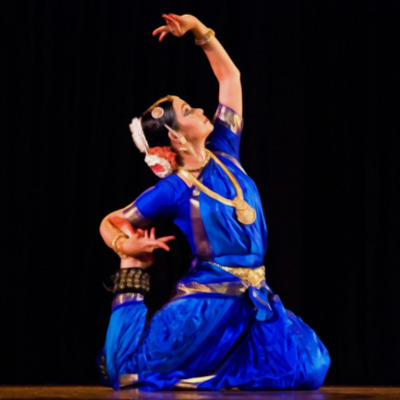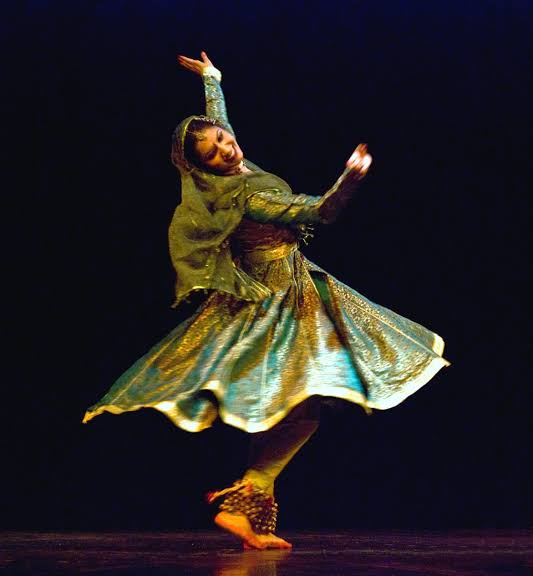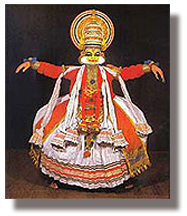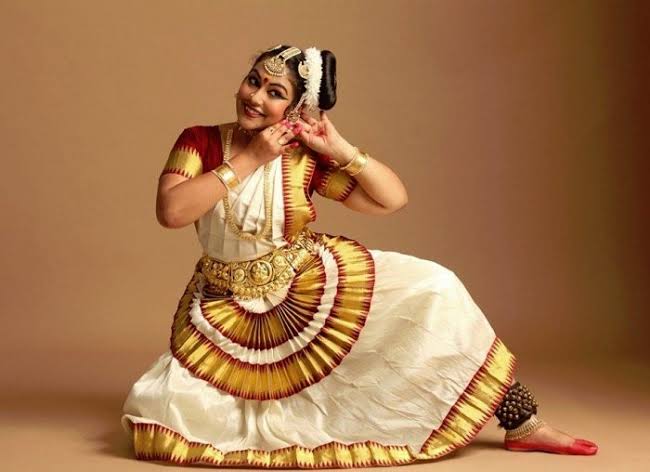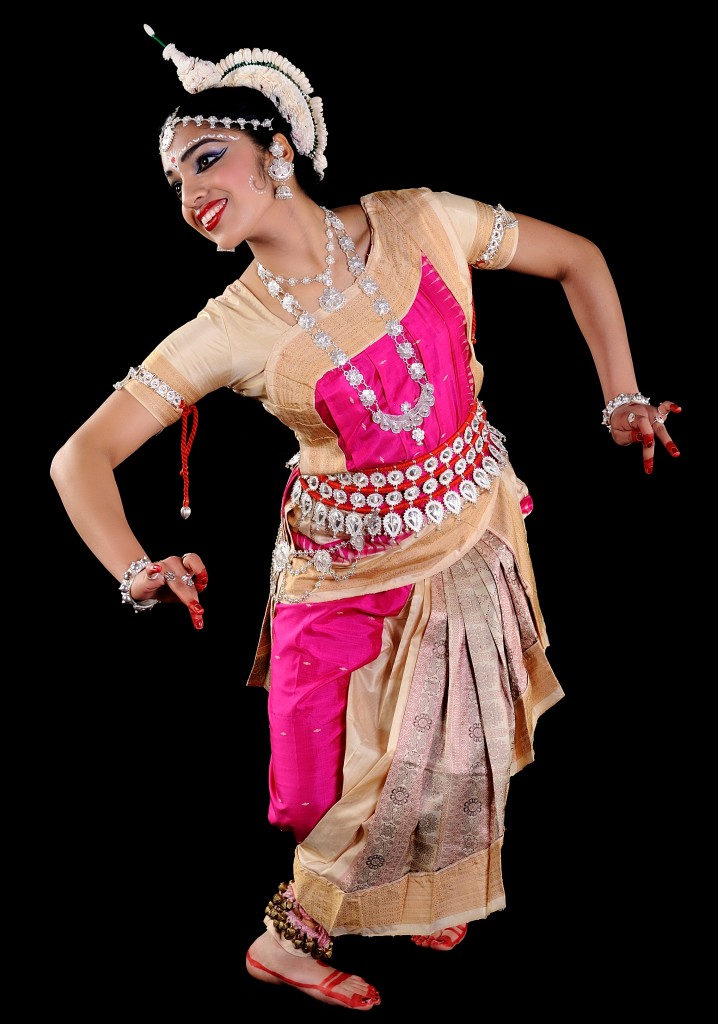Indian Classical Dances | 10 Jul 2019
Excavations, inscriptions, chronicles, genealogies of kings and artists, literary sources, sculpture and painting of different periods provide extensive evidence on dance in India.
- Contemporary classical dance forms have evolved out of the musical play or sangeet-nataka performed from the 12th century to the 19th century.
- The Indian classical dances have two basic aspects - Tandava (movement & rhythm) and Lasya (grace, bhava & rasa).
- The three main components are-
- Natya (the dramatic element of the dance i.e. the imitation of characters)
- Nritta (the dance movements in their basic form)
- Nritya (expressional component i.e. mudras or gestures).
- The nine rasas are - Love, Heroism, Pathos, Humour, Anger, Fear, Disgust, Wonder and Peace. The Natya Shastra written by Bharat Muni is the most prominent source for the Indian aestheticians for establishing the characteristics of the dances.
Classical Dances of India
- The Abhinaya Darpana by Nandikesvara is one of the main sources of textual material, for the study of the technique and grammar of body movement in Bharatnatyam Dance.
- Bharatnatyam dance is known to be ekaharya, where one dancer takes on many roles in a single performance.
- The dance involves transitional movements of leg, hip and arm. Expressive eye movements and hand gestures are used to convey emotions.
- The accompanying orchestra consists of a vocalist, a mridangam player, violinist or veena player, a flautist and a cymbal player. The person who conducts the dance recitation is the Nattuvanar.
- In its usual form the dance is generally broken into seven main parts – Alarippu, Jatiswaran, Shabda, Varna, Pada, Thillana and Sloka.
- Bharatnatyam poses are depicted on the gopurams of the Chidambaram temple (Tamil Nadu).
- E. Krishna Iyer and Rukmini Devi Arundale had played a significant role in helping the dance regain its lost popularity and position.
- The word Kathak has been derived from the word Katha which means a story.
- It was primarily a temple or village performance wherein the dancers narrated stories from ancient scriptures.
- Kathak began evolving into a distinct mode of dance in the fifteenth and sixteenth centuries with the spread of the bhakti movement.
- The legends of Radha-Krishna were enacted in folk plays called rasa lila, which combined folk dance with the basic gestures of the kathak story-tellers.
- Under the Mughal emperors and their nobles, Kathak was performed in the court, where it acquired its present features and developed into a form of dance with a distinctive style.
- Under the patronage of Wajid Ali Shah, the last Nawab of Awadh, it grew into a major art form.
- Usually a solo performance, the dancer often pauses to recite verses followed by their execution through movement.
- The focus is more on footwork; the movements are skillfully controlled and performed straight legged by dancers wearing ankle-bells.
- Kathak is the only form of classical dance wedded to Hindustani or the North Indian music.
- Lady Leela Sokhey (Menaka) revived the classical style. Some prominent dancers include Birju Maharaj, Sitara Devi.
- Chakiarkoothu, Koodiyattam, Krishnattam and Ramanattam are few of the ritual performing arts of Kerala which have had a direct influence on Kathakali in its form and technique.
- Kathakali is a blend of dance, music and acting and dramatizes stories, which are mostly adapted from the Indian epics.
- Heavy make-up and stunning costumes (elaborate masks, huge skirts and big head-dresses) are used.
- The dancers enact the roles (kings, gods, demons etc.) of the stories with particular make-up and costume, the vocalists narrate the legend and the percussionists play the musical instruments.
- Different facial colours indicate different mental stages & character, e.g. green – nobility, black – wicked, red patches – combining royalty & evil.
- Hand gestures, facial expressions and eye movements are important.
- Weight of the body is on the outer edges of the feet which are slightly bent and curved.
- Ramankutty Nair and Kalamandalam Gopi were the prominent artists.
Kuchipudi (Andhra Pradesh)
- Kuchipudi is the name of a village in the Krishna district of Andhra Pradesh which has a very long tradition of dance-drama. It was known under the generic name of Yakshagaana.
- In 17th century Kuchipudi style of Yakshagaana was conceived by Siddhendra Yogi. He was steeped in the literary Yakshagaana tradition being guided by his guru Teerthanaaraayana Yogi who composed the Krishna-Leelatarangini, a kaavya in Sanskrit.
- It is performed as dance drama i.e. performance in groups and also as solo items.
- Costumes, ornaments and jewellery occupy an important place.
- The solo items are Manduka Shabdam (story of frog maiden), Balgopala Taranga (dance on the edges of brass plate with a pitcher full of water on head) and Tala Chitra Nritya (drawing pictures with dancing toes).
- Yamini Krishnamurthy and Raja Reddy are prominent dancers.
- Mohiniyattam or dance of Mohini (an incarnation of Lord Vishnu) is the classical solo dance form of Kerala.
- References of Mohiniyattam can be found in the texts Vyavaharamala written in 1709 by Mazhamagalam Narayanan Namputiri and in Ghoshayatra, written later by poet Kunjan Nambiar.
- It was structured into the present day classical format by the Travancore Kings, Maharaja Kartika Tirunal and his successor Maharaja Swati Tirunal (18th-19th century)
- Mostly a solo performance by girls with circular movements, delicate footsteps and subtle expressions.
- Movements have been borrowed from Nangiar Koothu and female folk dances Kaikottikali and the Tiruvatirakali.
- It has elements of Bharatanatyam (grace & elegance) and Kathakali (vigour) but is more erotic, lyrical and delicate.
- Realistic make-up and simple dressing (in Kasavu saree of Kerala) are used.
- The lyrics are in Manipravala (a medieval south Indian language combining Tamil-Malayalam and Sanskrit).
- Sunanda Nair and Pallavi Krishnan are the notable artists.
- The major subjects of performance are lores of incarnations of Lord Vishnu and verses of Jayadeva’s Gita Govinda.
- A soft dance backed by soothing lyrics and is similar to Bharatanatyam in terms of the mudras and expressions.
- Termed as ‘mobile sculpture’ it incorporates two major postures - Tribhanga (the body is deflected at the neck, torso and the knees) and Chowk (a position imitating a square).
- Sonal Mansingh and Kelucharan Mohapatra are the eminent performers.
Sattriya (Assam)
- The Sattriya dance form was introduced in the 15th century A.D by the Vaishnava saint and reformer of Assam, Sankaradeva as a medium for propagation of the Vaishnava faith.
- The dance form evolved and expanded as a distinctive style of dance later on.
- Because of its religious character and association with the Sattras (Vaishnava maths or monasteries), this dance style has been named Sattriya.
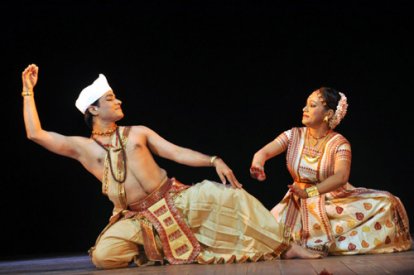
- Sattriya dance tradition is governed by strictly laid down principles in respect of hastamudras, footworks, aharyas, music etc.
- This tradition, has two distinctly separate streams - the Bhaona-related repertoire starting from the Gayan-Bhayanar Nach to the Kharmanar Nach, secondly the dance numbers which are independent, such as Chali, Rajagharia Chali, Jhumura, Nadu Bhangi etc.
- Among them the Chali is characterized by gracefulness and elegance, while the Jhumura is marked by vigor and majestic beauty.
Manipuri (Manipur)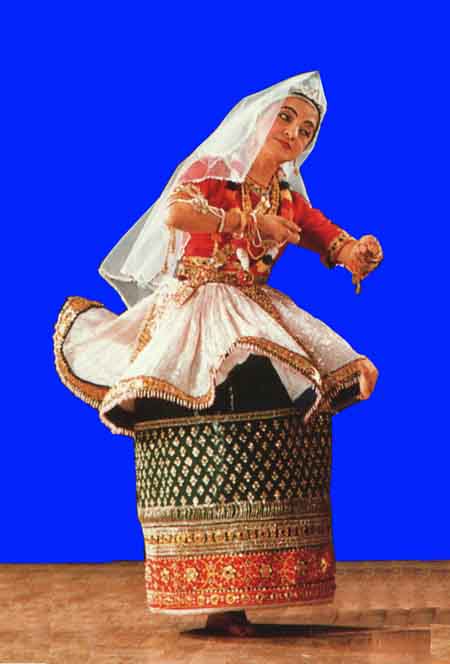
- The origin of Manipuri dance can be traced back to ancient times that go beyond recorded history.
- The dance in Manipur is associated with rituals and traditional festivals, there are legendary references to the dances of Shiva and Parvati and other gods and goddesses who created the universe.
- Lai Haraoba is the earliest form of dance which forms the basis of all stylised dances in Manipur.
- Literally meaning - the merrymaking of the gods, it is performed as a ceremonial offering of song and dance.
- The principal performers are the maibas and maibis (priests and priestesses) who re-enact the theme of the creation of the world.
- The popular Rasleela dances of Manipur originated in the reign of 18th century King Bhagyachandra.
- Manipur dance has a large repertoire, however, the most popular forms are the Ras, the Sankirtana and the Thang-Ta.
- The Kirtan form of congregational singing accompanies the dance which is known as Sankirtana in Manipur.
- The male dancers play the Pung and Kartal while dancing.
- The dancers do not wear ankle bells to stamp out the rhythms in a theatrical display, as this interferes with the delicate body movements.

